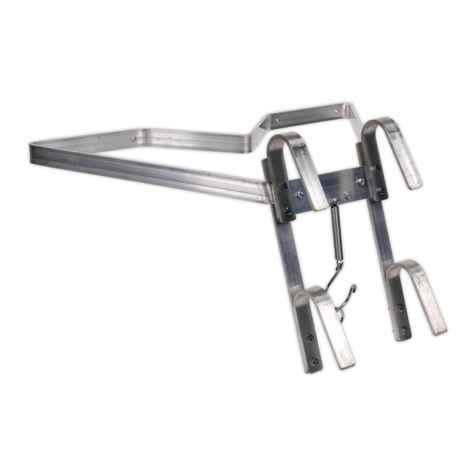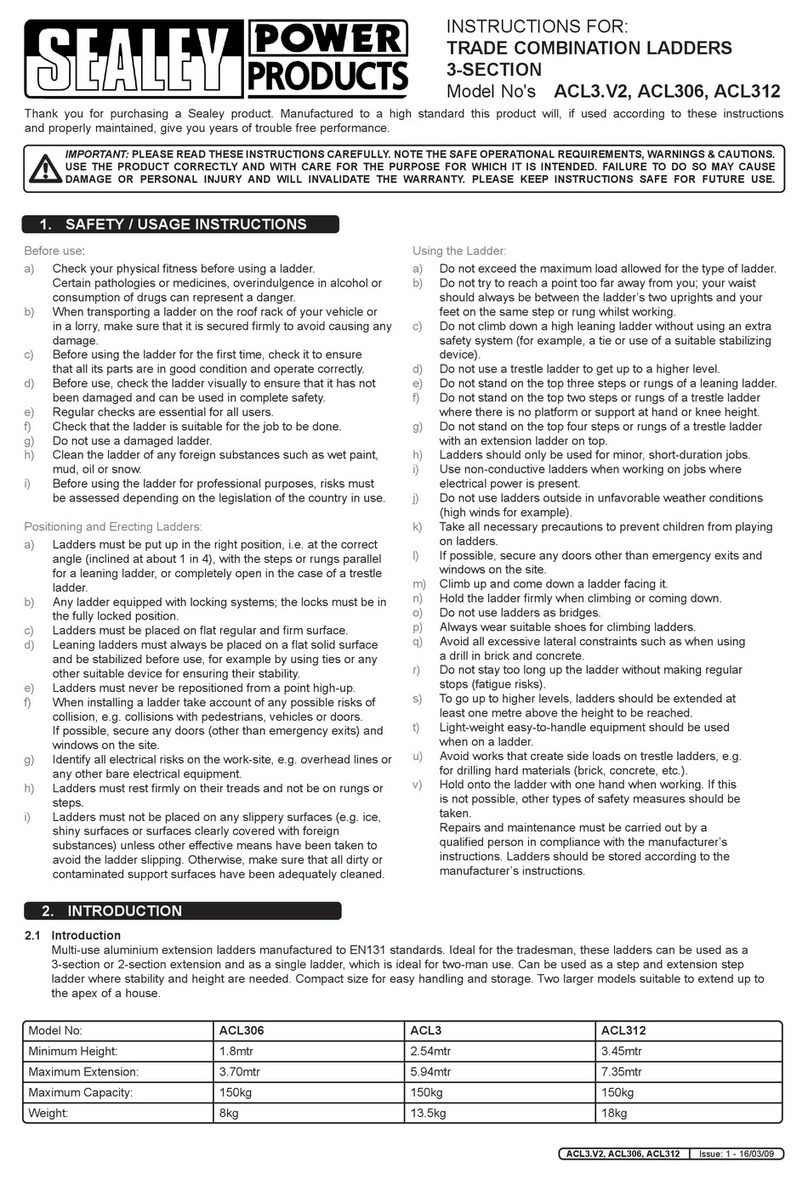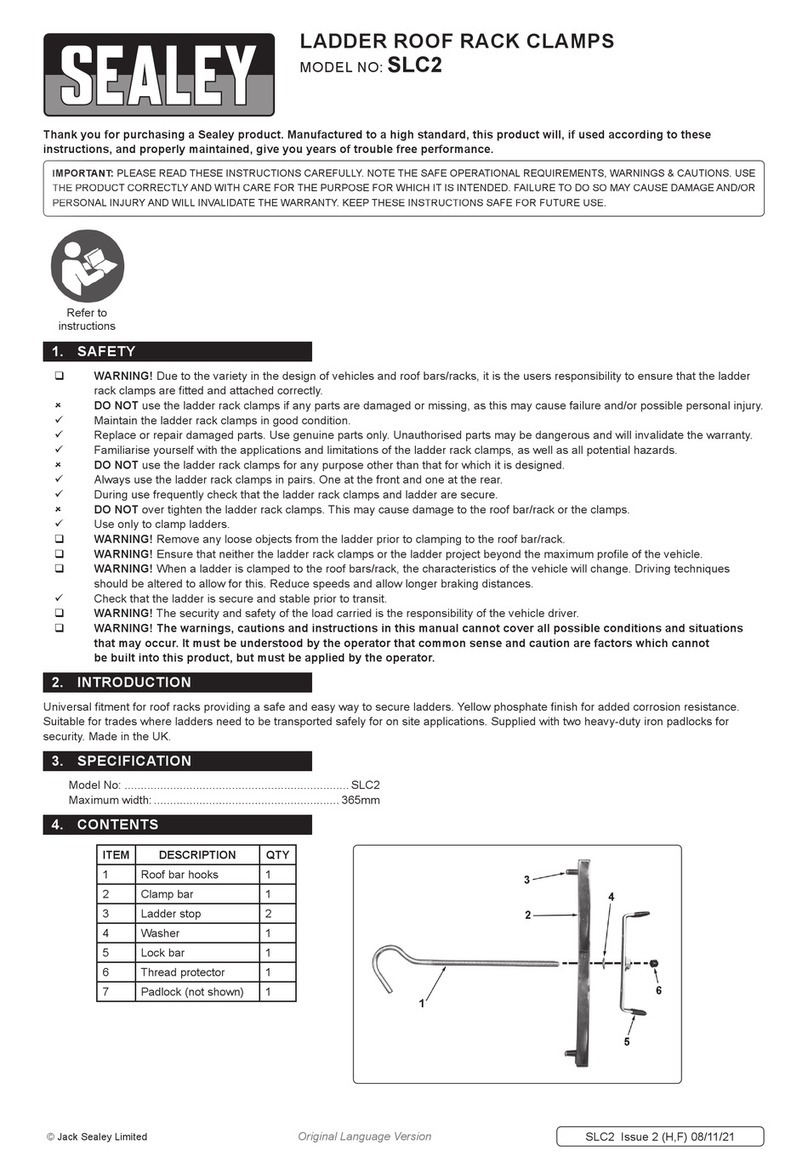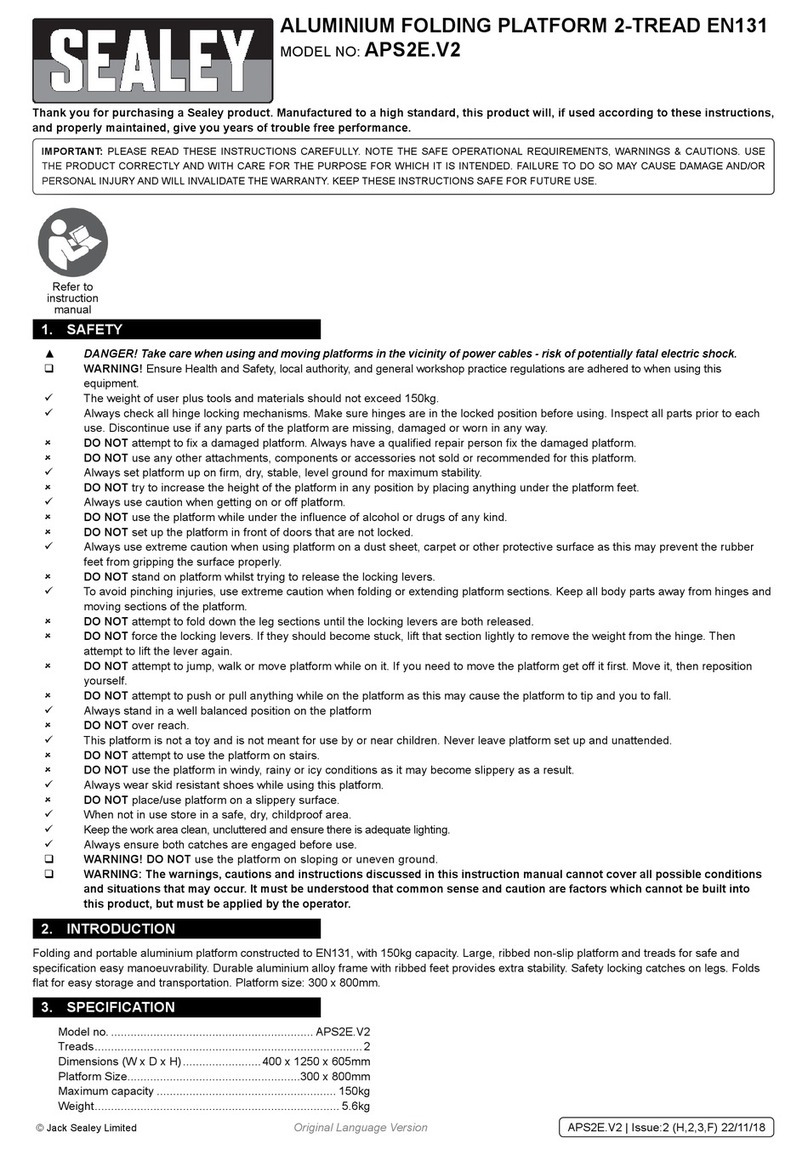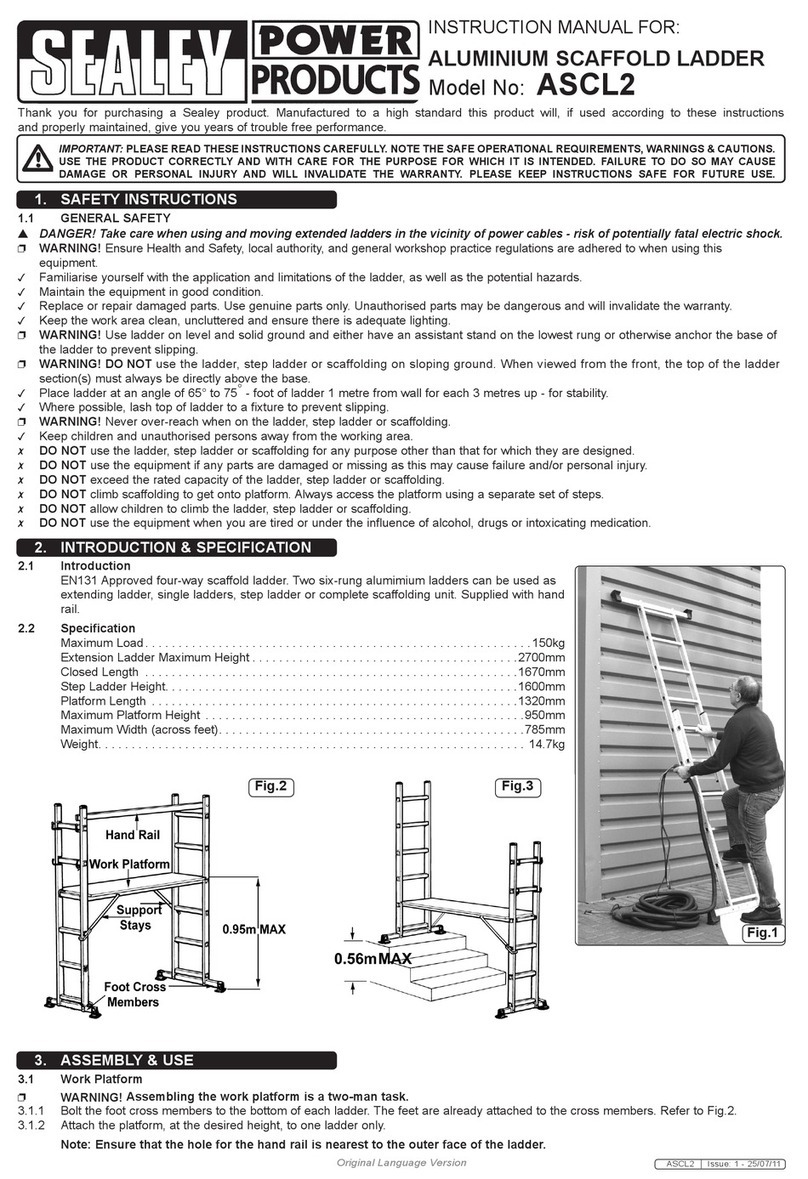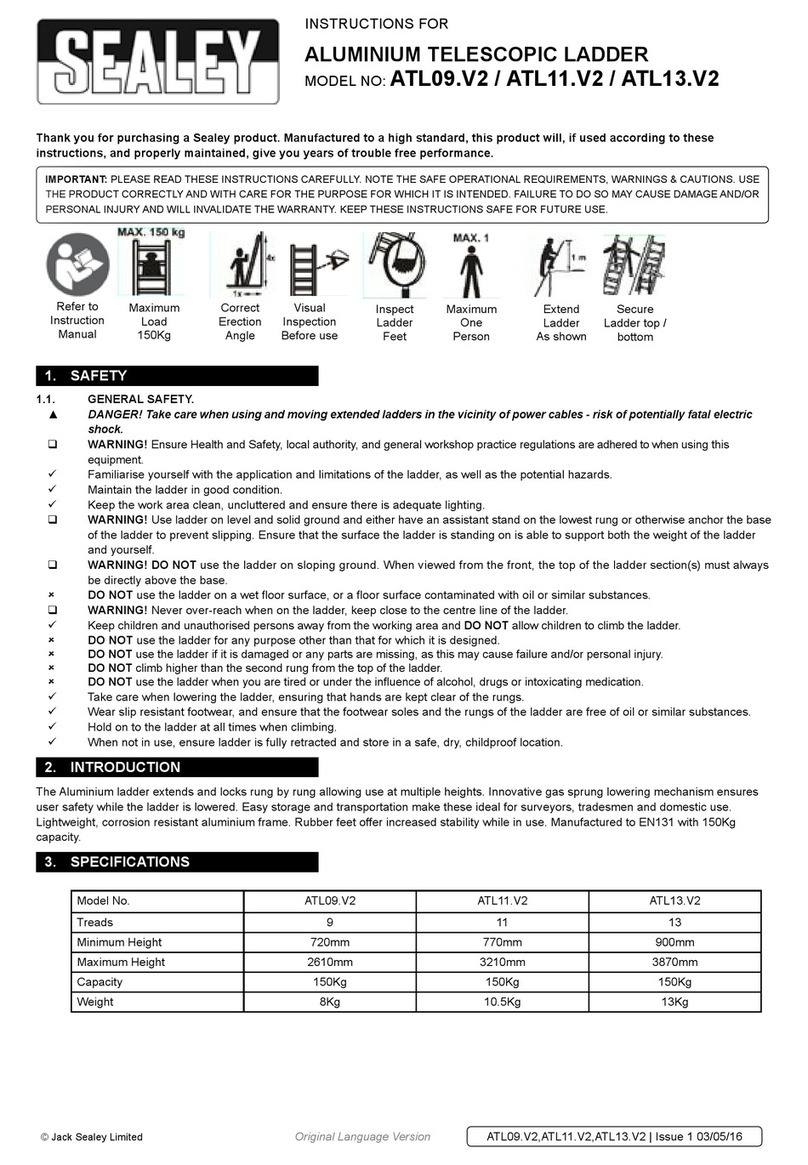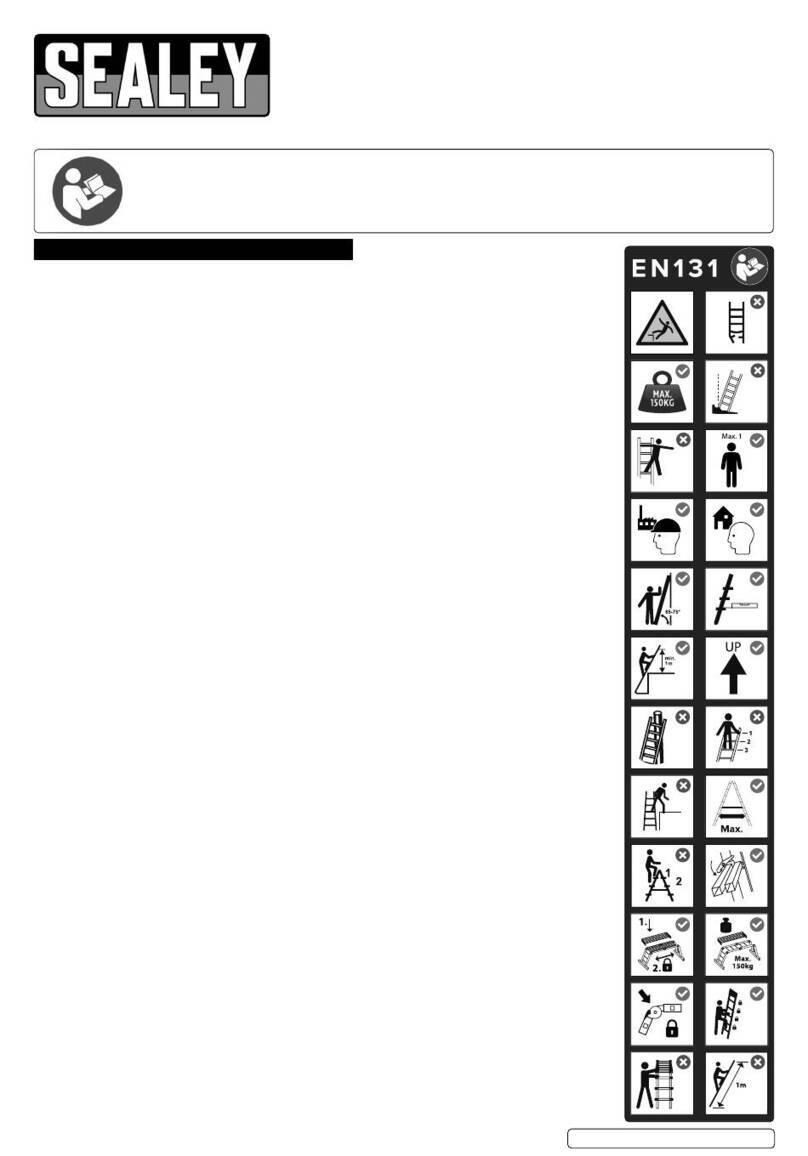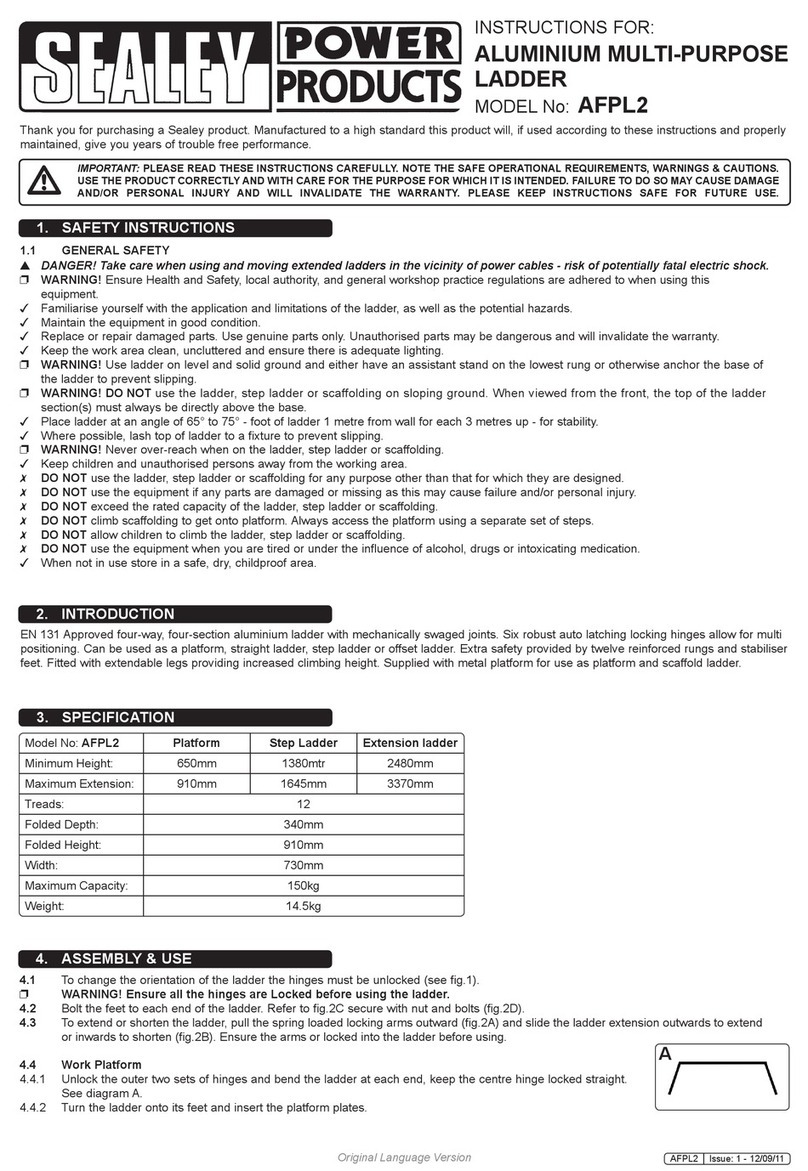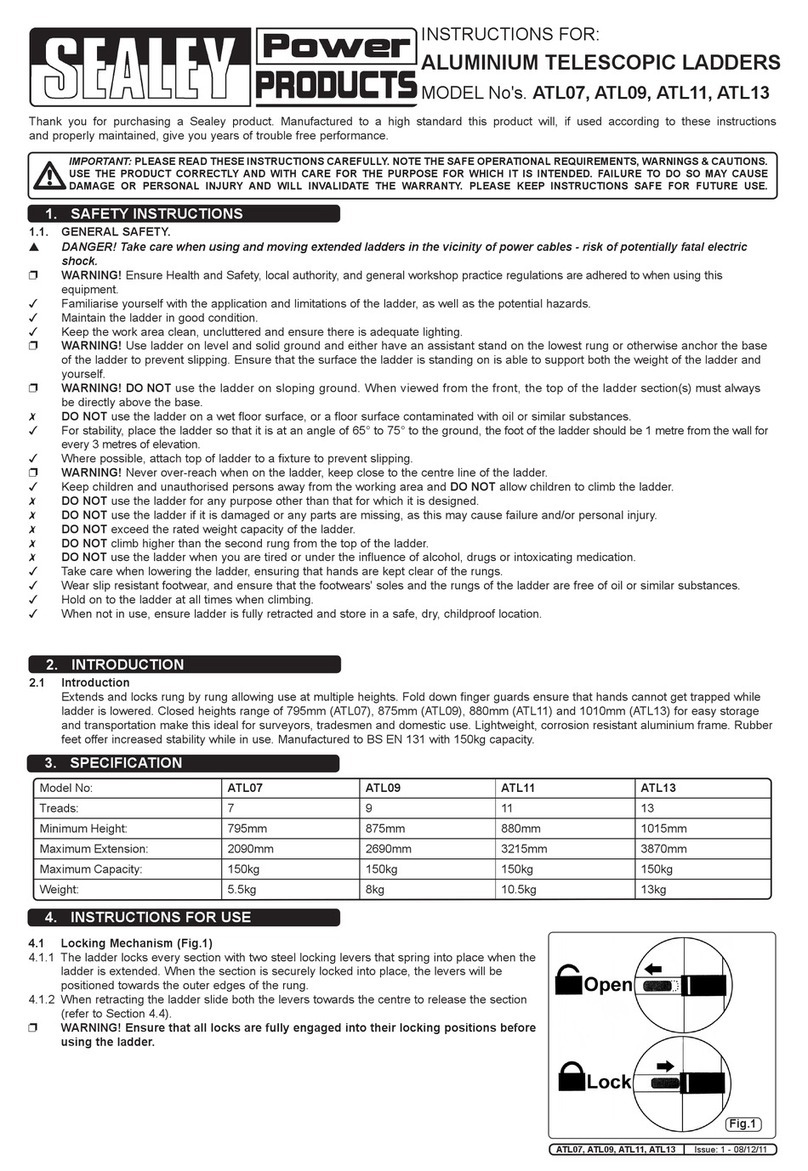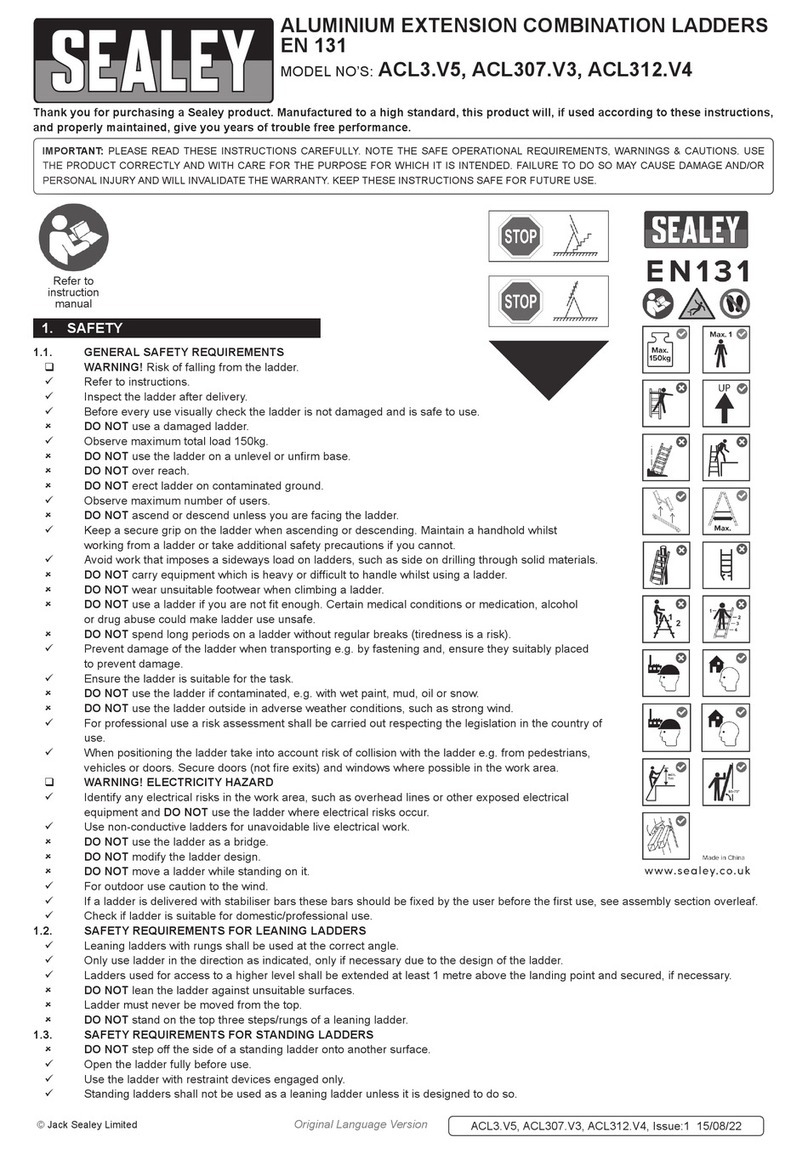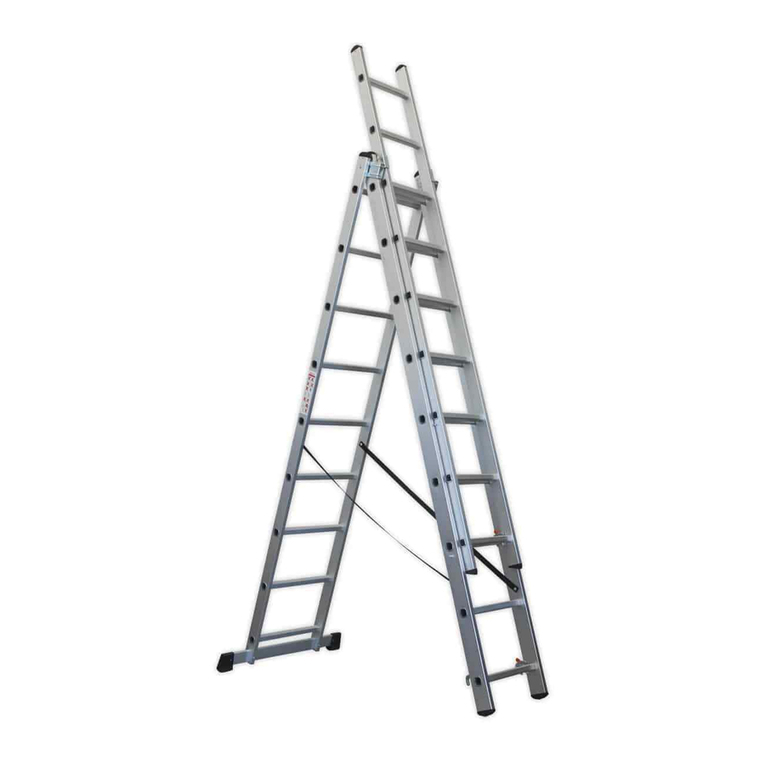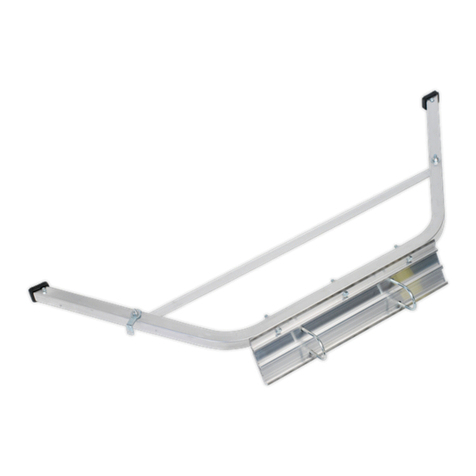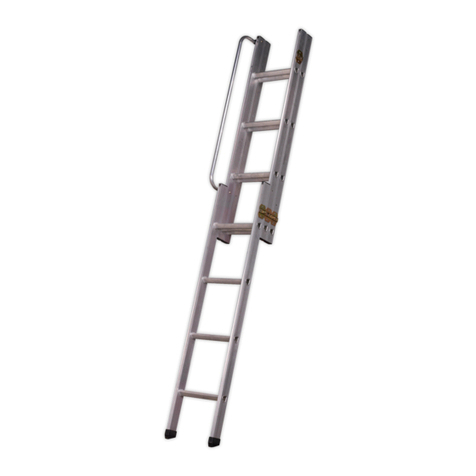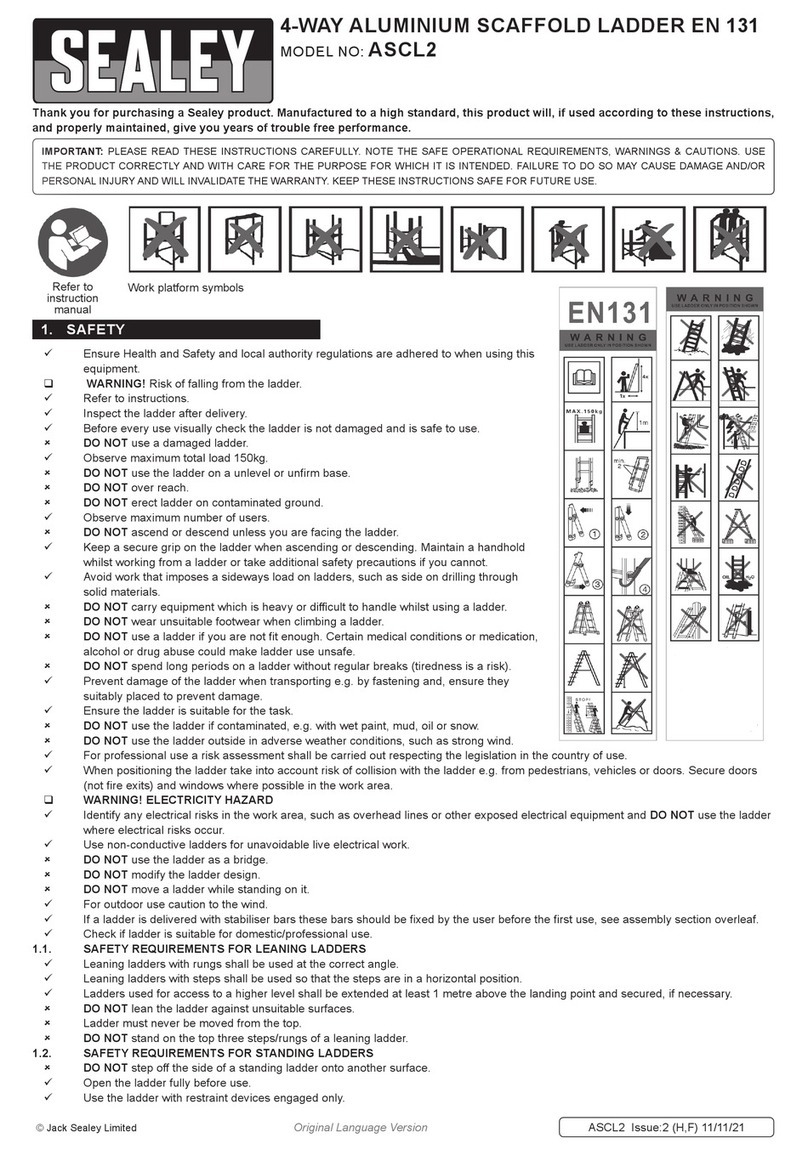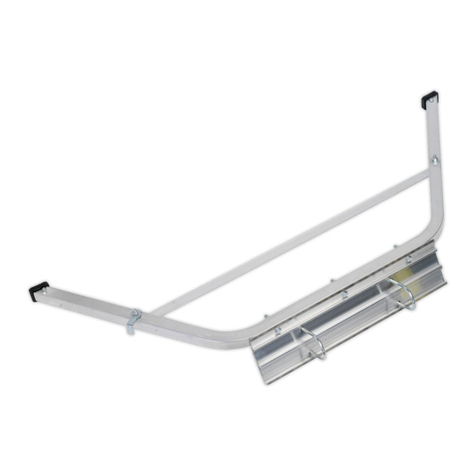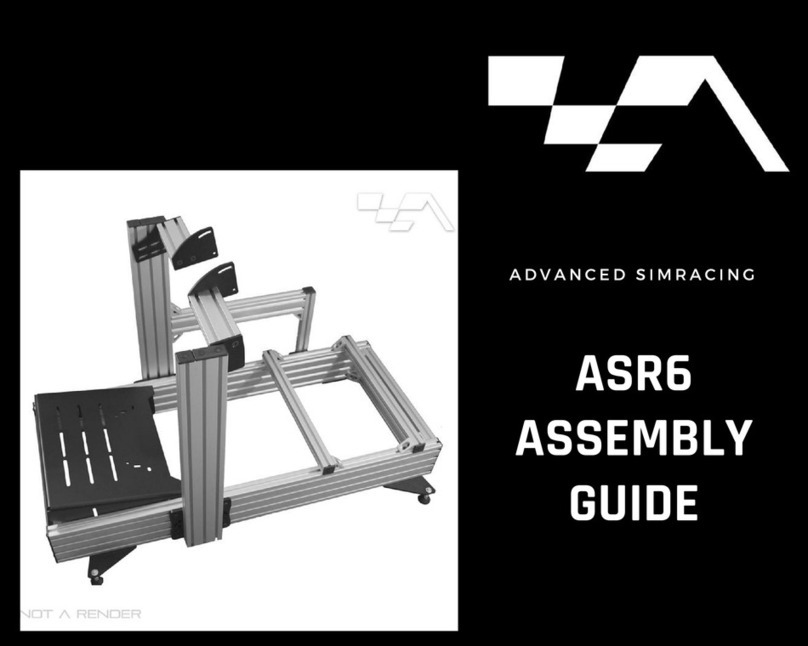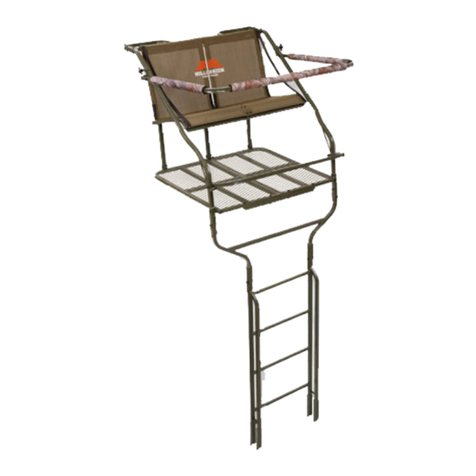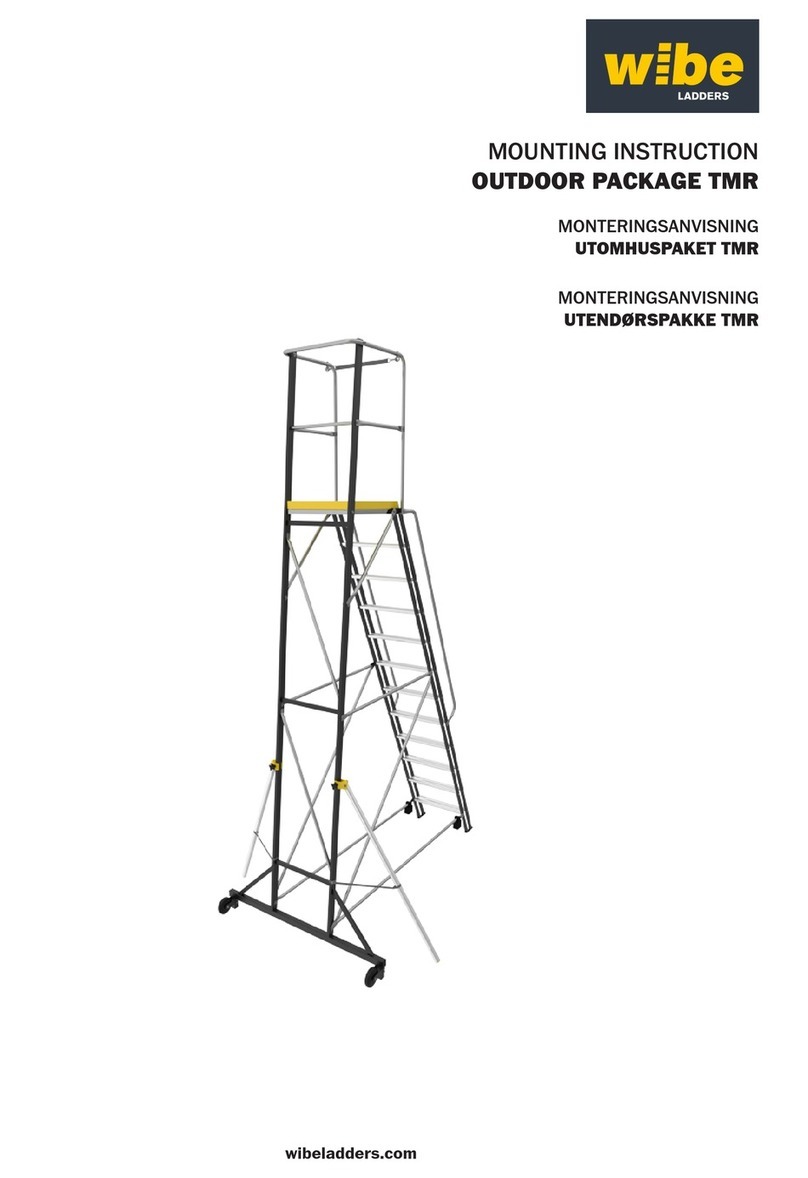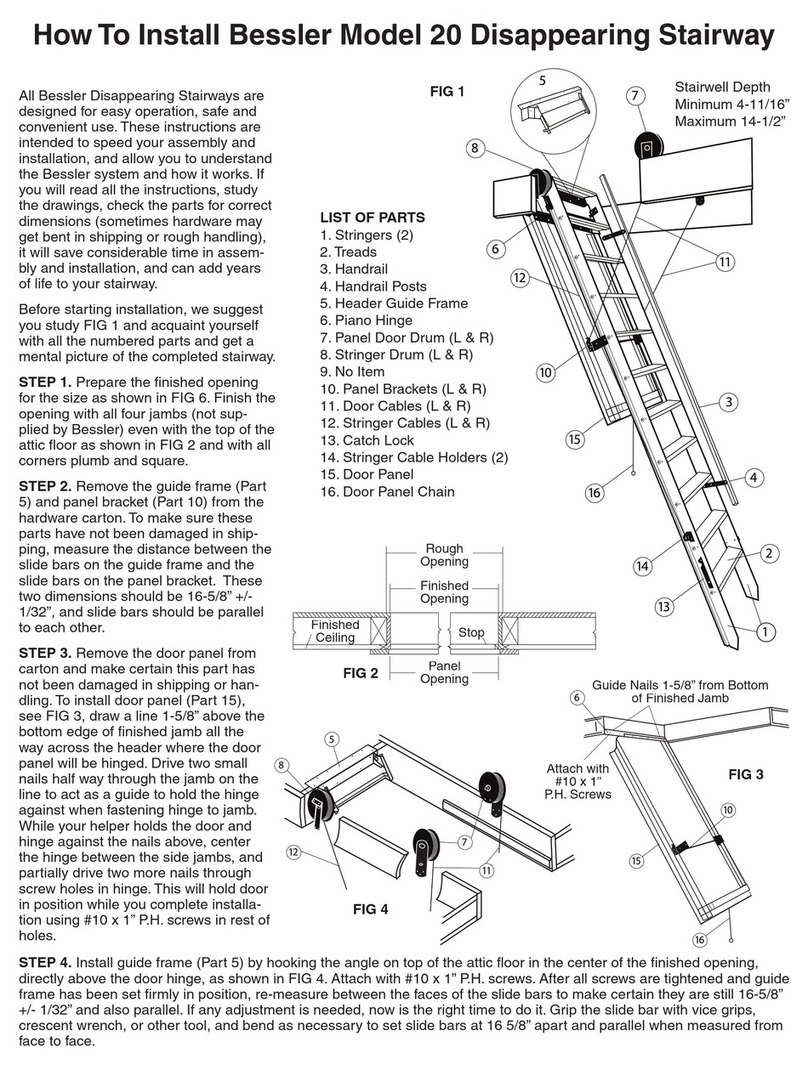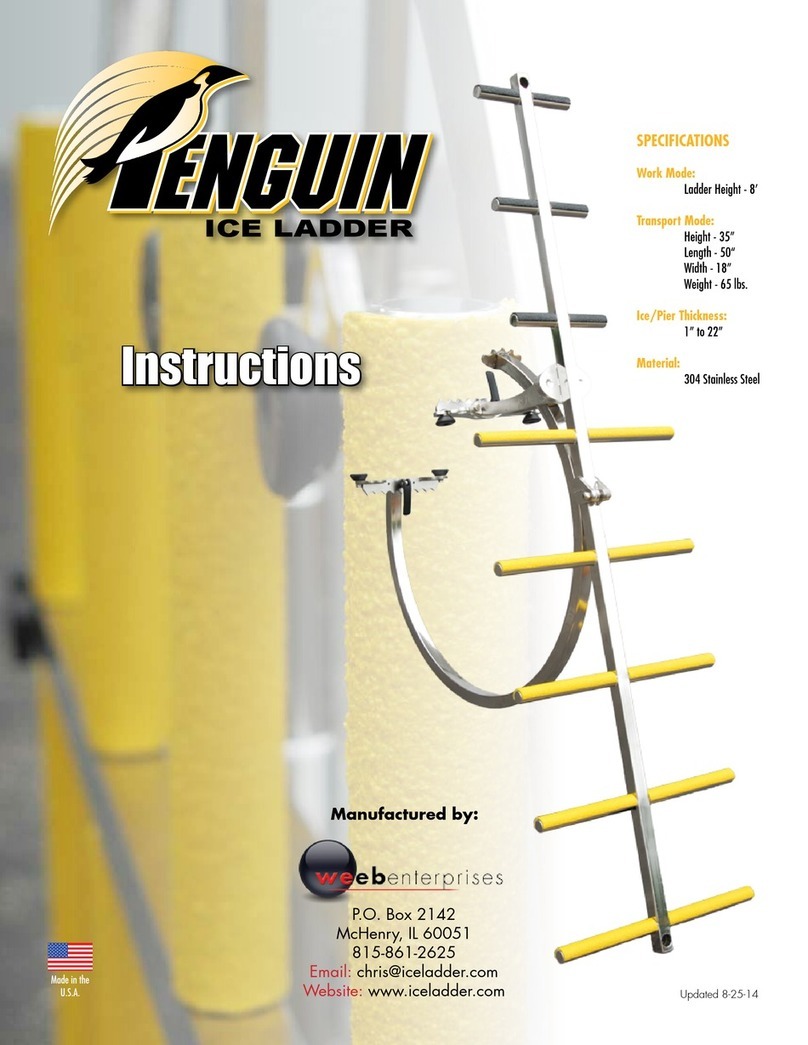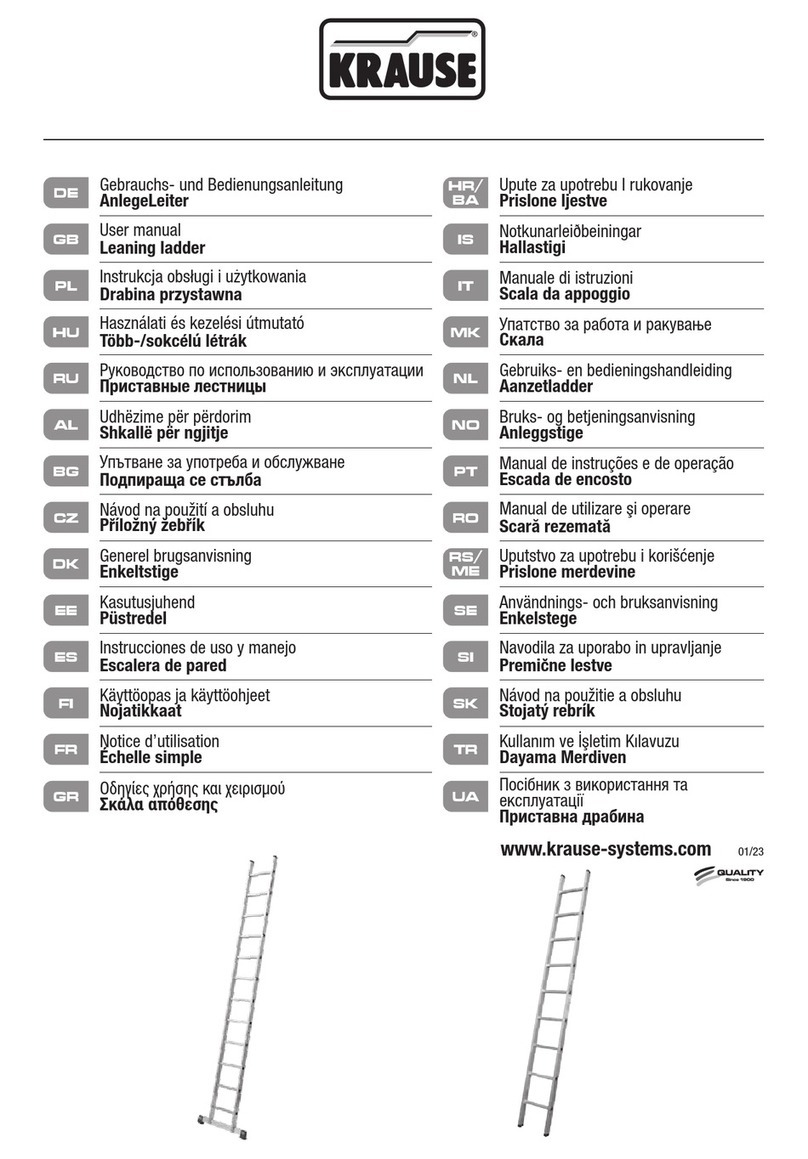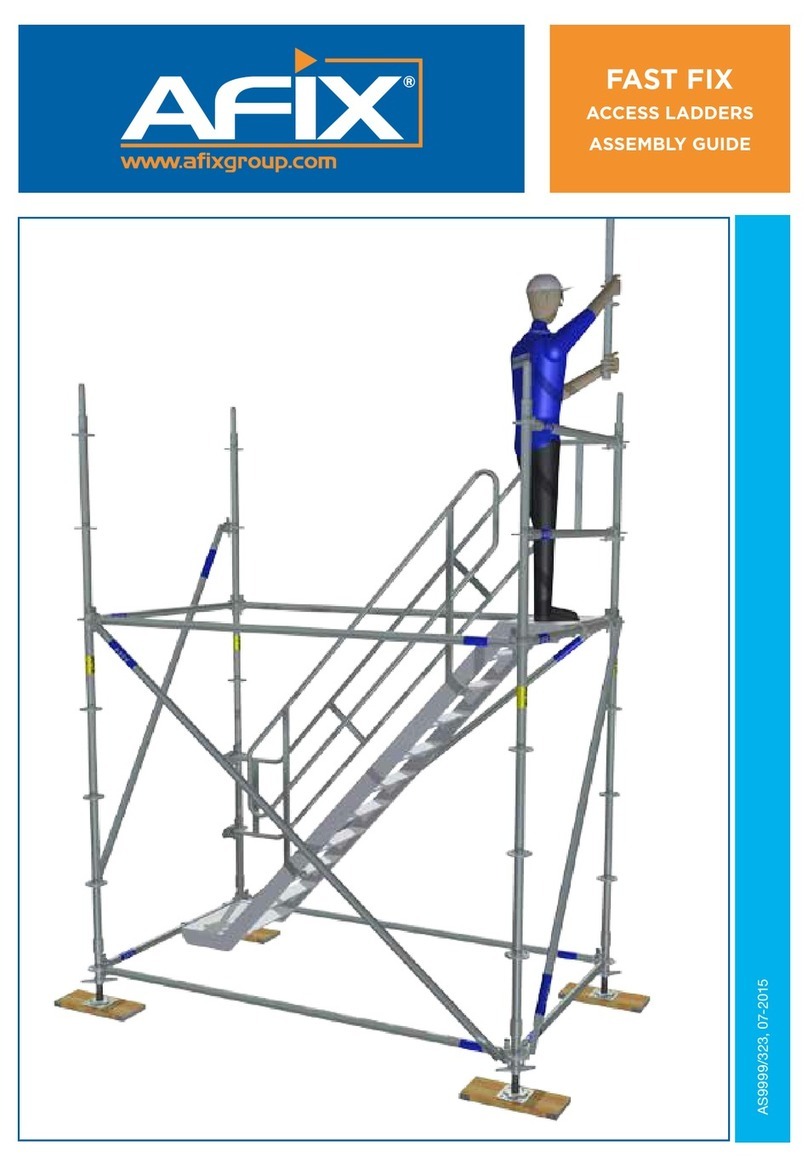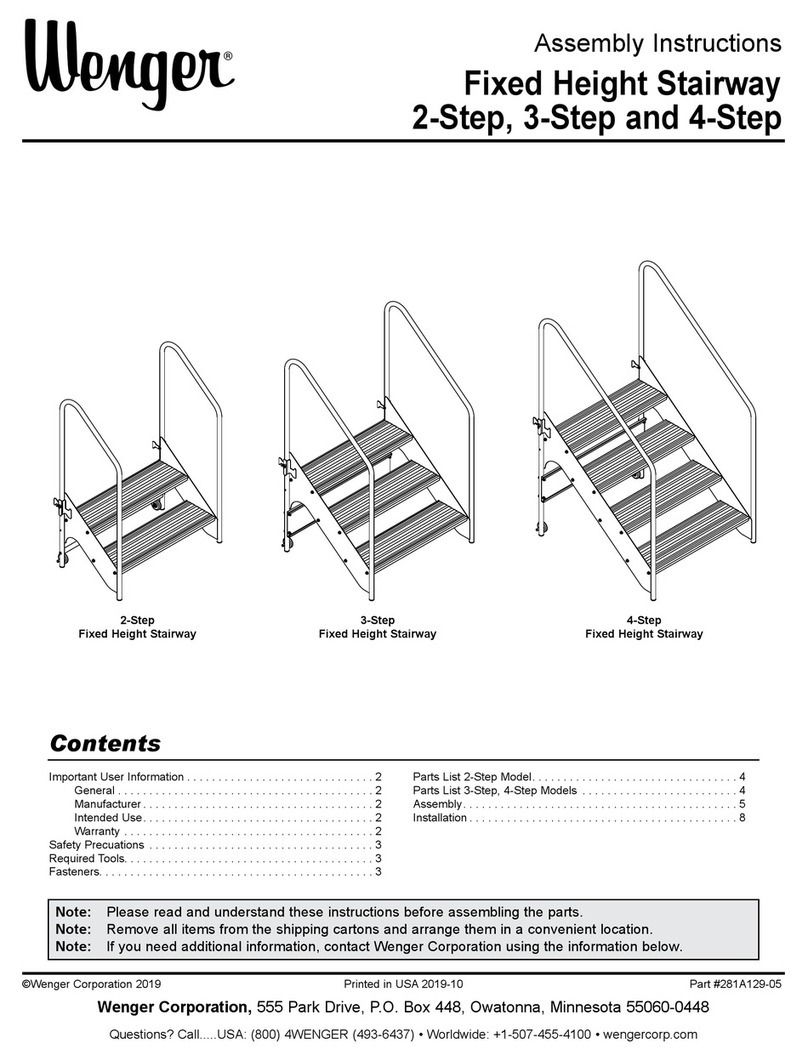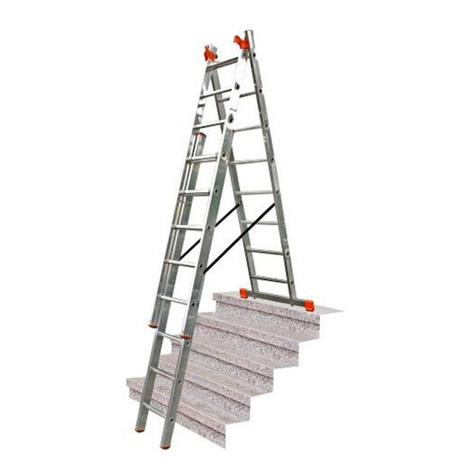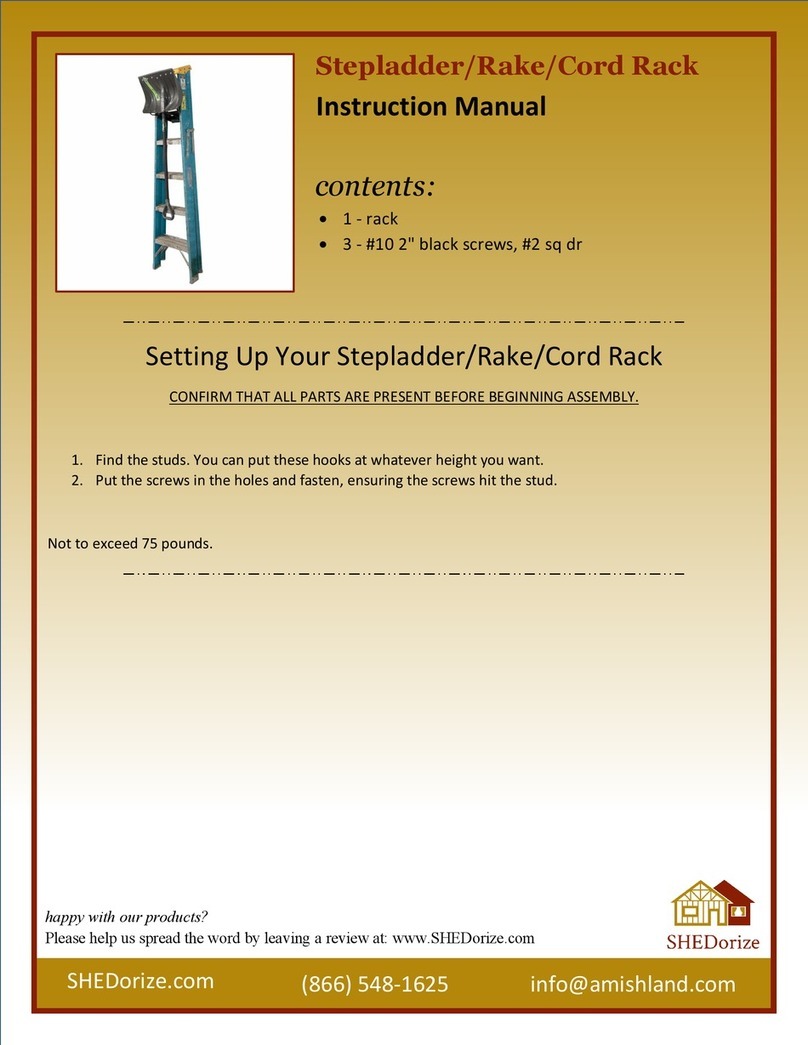
ALUMINIUM TELESCOPIC LADDER
MODEL NO: ATL09.V3, ATL11.V3, ATL13.V3
Thank you for purchasing a Sealey product. Manufactured to a high standard, this product will, if used according to these
instructions, and properly maintained, give you years of trouble free performance.
IMPORTANT: PLEASE READ THESE INSTRUCTIONS CAREFULLY. NOTE THE SAFE OPERATIONAL REQUIREMENTS, WARNINGS & CAUTIONS. USE
THE PRODUCT CORRECTLY AND WITH CARE FOR THE PURPOSE FOR WHICH IT IS INTENDED. FAILURE TO DO SO MAY CAUSE DAMAGE AND/OR
PERSONAL INJURY AND WILL INVALIDATE THE WARRANTY. KEEP THESE INSTRUCTIONS SAFE FOR FUTURE USE.
ATL09.V3,ATL11.V3,ATL13.V3 | Issue 1 14/05/20
Original Language Version
© Jack Sealey Limited
1. SAFETY
1.1. GENERAL SAFETY Numbers refer to diagram below.
WARNING! Risk of falling (1).
9Refer to instruction manual (2).
9Inspect ladder after delivery. Before every use check the ladder is not damaged and
is safe to use. DO NOT use a damaged ladder (6).
8DO NOT exceed maximum load (3).
8DO NOT use the ladder on an unlevel or unrm base (14).
8DO NOT overeach (11).
8DO NOT use on contaminated (by oil or water) ground.
9 Maximum number of users is one (9).
8DO NOT ascend or descend unless you are facing the ladder.
8DO NOT climb above the rung or tread indicated by the producer. The minimum
requirement shall always be DO NOT climb above the top 3 steps/rungs. (13)
9 Keep a secure grip on the ladder when ascending or descending. Maintain a
handhold whilst working from a ladder or take additional safety precautions if you can
not.
9 Avoid work that imposes a sideways load on ladders, such as side-on drilling through
solid materials.
8DO NOT carry equipment which is heavy or difcult to handle while using a ladder.
8DO NOT wear unsuitable footwear when climbing a ladder.
8DO NOT use a ladder if you are not t enough. Certain medical conditions or
medication, alcohol or drug abuse could make ladder use unsafe.
8DO NOT spend long periods on a ladder without regular breaks (tiredness is a risk).
9 Prevent damage of the ladder when transporting e.g. by fastening and, ensure they
are suitably placed to prevent damage.
9 Ensure the ladder is suitable for the task.
8DO NOT use the ladder if contaminated, e.g. with wet paint, mud, oil or snow.
8DO NOT use the ladder outside in adverse weather conditions, such as strong wind.
9 For professional use a risk assessment shall be carried out respecting the legislation
in the country of use.
9 When positioning the ladder take into account risk of collision with the ladder e.g.
from pedestrians, vehicles or doors. Secure doors (not re exits) and windows where
possible in the work area.
WARNING! ELECTRICITY HAZARDS Identify any electrical risks in the work
area, such as overhead lines or other exposed electrical equipment and DO NOT use the ladder use the ladder where
electrical risks occur.
9 Use non-conductive ladders for unavoidable live electrical work.
8DO NOT use ladder as a bridge.
8DO NOT step off the side of a standing ladder onto another surface.
8DO NOT modify the ladder design.
8DO NOT move a ladder while standing on it.
9 For outdoor use caution to the wind.
9 Check ladder is correct for professional/domestic use (16/17).
1.2. LEANING LADDERS
9 Leaning ladders with rungs shall be used at the correct angle (5).
9 Leaning ladders with steps shall be used so that the steps are in a horizontal position.
9 Ladders used for access to a higher level shall be extended at least 1m above the landing point and secured, if necessary (4).
9 Only use the ladder in the direction indicated, only if necessary due to the design of the ladder (7).
8DO NOT lean the ladder against unsuitable surfaces (15).
9 Ladder shall never be moved from the top.
8DO NOT stand on the top three steps/rungs of a leaning ladder. For telescopic ladders the last metre shall not be used.
9 Open the ladder fully before use.
9 Use the ladder with restraint devices engaged only.
9 Standing ladders shall not be used as a leaning ladder unless it is designed to do so.
9 Locking devices shall be checked and be fully secured before use if not operated automatically.
1.3. SAFETY REQUIREMENTS SPECIFIC TO TELESCOPIC LADDERS
9All locking mechanisms for all extended rungs/steps shall be locked and checked before use (8).
9 Follow instructions for handling of locking mechanisms including indication of locked or unlocked position.
8DO NOT bring your hands/ngers in rung area (area of shearing) when bringing the ladder in to its possible positions of use (10).
